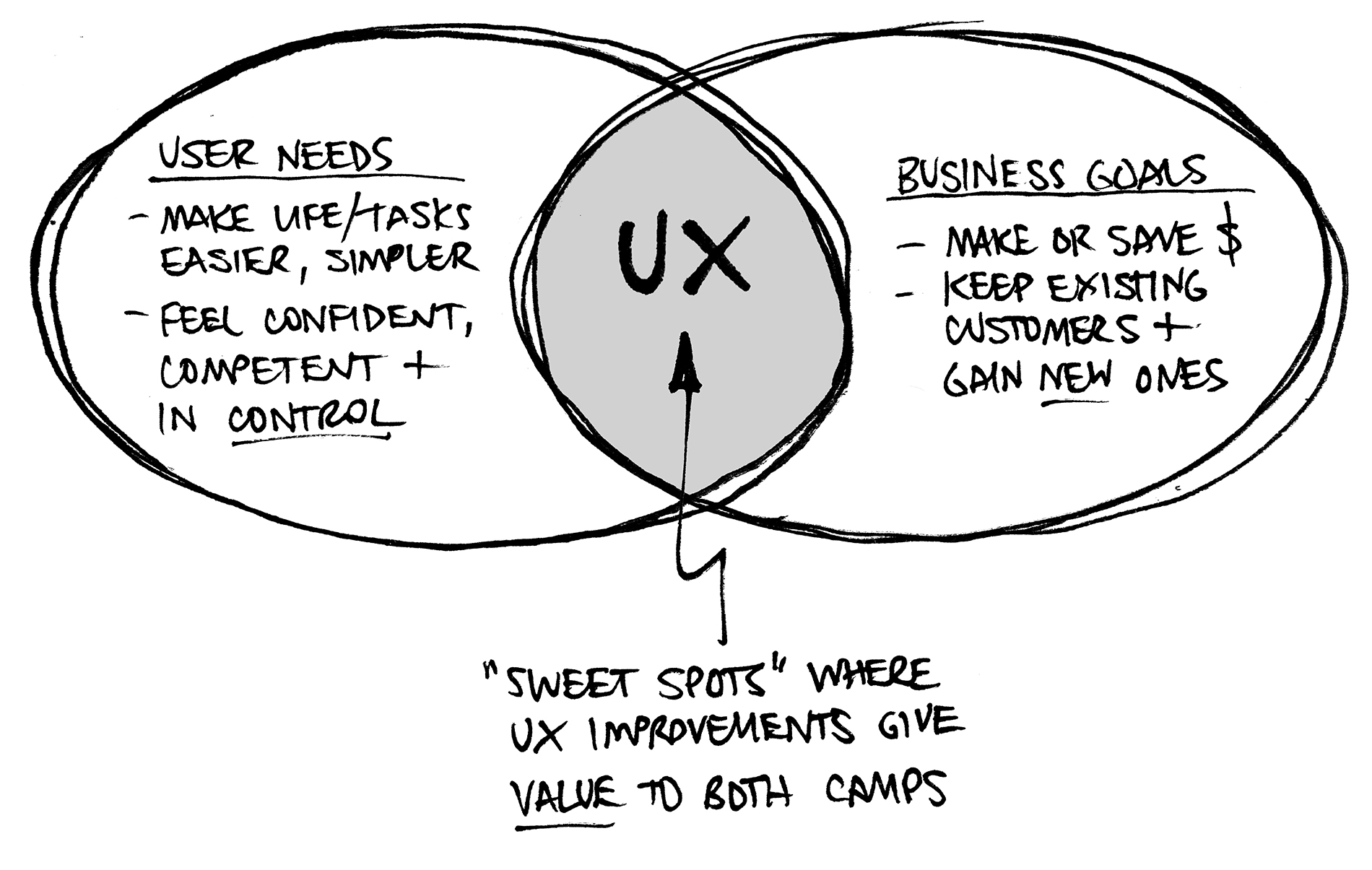We were very pleased to interview author Joe Natoli about his new book Think First: My no-nonsense approach to creating successful products, memorable user experiences and happy customers. Today, we’ll be offering readers an excerpt of the book itself.
Strategy Means Putting People First
Products are used by people, so putting users and their needs first is a pretty good place to start:
- What do they need to be able to do, and why do these things matter to them?
- What do they want from us, and how is that related to other goals they may have?
- How does using our product fit with other products they may be using?
- What do they expect, based on their experiences with similar (or even dissimilar) products?
These are all user-focused areas of inquiry.
People live on the other side of the fence as well, except they’re funding the project. Which dictates that they’re concerned with business objectives. Creation always entails cost — time, effort, money. And nearly every creator is looking for a way to cover that cost, along with a little extra.
Even if you build apps for free, there is something you expect to get in return. That doesn’t have to be money; it could be recognition or widespread adoption. It may simply be something that you truly feel good about because it helps people who are less fortunate. Whatever the case, there are objectives you have that need to be met, measures of success that matter.
If the business end of the equation is actually a business, then the objective, at the end of the day, is either making money or saving money. There are one or more strategic objectives that have to be met as a result of building this thing and putting it out there into the world.
If you’re responsible for helping make a product reality, then you’re also responsible for uncovering what those objectives are and why they matter.
Strategy, then, is all about finding the sweet spots between what users want to make their lives easier and what the business needs to accomplish in order to survive, to prosper. It’s about recognizing the gaps and the overlaps between those goals and thinking about how design can best serve both of these masters.

Why the Strategy Plane Rules Them All
The UX designer’s job is not only to address information concerns and the related needs of users — it’s also to insist on being very selective and analytical in designing task flows and functional elements that serve a greater goal.
And that greater goal is what I call the value loop: creating something that delivers value to users, so that value also comes back to the product’s creator in the form of increased use, efficiency or good old fashioned dollars and cents.
UX strategy is the origin of the value loop, the part that you absolutely, positively have to get right if you want the finished product to be around longer than ten minutes.
The strategy plane is where you think first: where you work to uncover and qualify user needs, where you ensure that you understand all relevant business objectives. It’s where you begin planting seeds of product success — or failure.
Correctly identify and address these needs and objectives, and you deliver an experience that is the answer to someone’s prayer. Guess wrong, or don’t do enough digging, and you identify the wrong needs and objectives. Which turns the product into everyone’s worst nightmare, including yours.
When it comes right down to it, design of any kind really means problem solving. Here’s some advice given to me by a colleague many years ago that couldn’t possibly be more true:
If you’re a designer — experienced or fresh out of school — I want you to understand that you will not find inspiration looking at the work of other designers.
Let that sink in a minute.
I say again: you will not find inspiration. What you will find is someone else’s solution to someone else’s problem.
You’re looking at the end result, not the process. And the process, my friends, is where the power of design really lies. The first thing you have to do, no matter what you’re creating, is identify the problem — and then make sure it’s actually the right problem to solve.
When I was in college, my professors drilled the following fact into our heads, over and over across our four years together:
If you don’t come up with a good solution to something, it’s likely that you don’t have a very good problem.
That’s a roundabout way of saying that the key to successful design is identifying the right problems to solve. User experience design essentially explores feasible solutions to strategic design problems:
- What matters most?
- What issues have the most impact, the most measurable value?
- What can we do to address these issues, and do we have the time, money and personnel to take that action?
- Is it realistic that we can provide a solution to this particular, precise, complex problem?
Anything involving human beings is inherently messy. We’re interesting creatures. What we say doesn’t always match what we do, and in general we can be very difficult to please. So any problems that involve our using something are typically difficult to solve.
And if they aren’t, raise the red flag — because that’s a sure sign you’re on the wrong path.
Joe Natoli’s new book, Think First: My No-Nonsense Approach to Creating Successful Products, Memorable User Experiences + Very Happy Customers will be available in eBook and Paperback October 5th, 2015. Visit givegoodux.com/think-first to find out how you can get 3 free bonuses worth $600 when you buy Think First the week of launch!